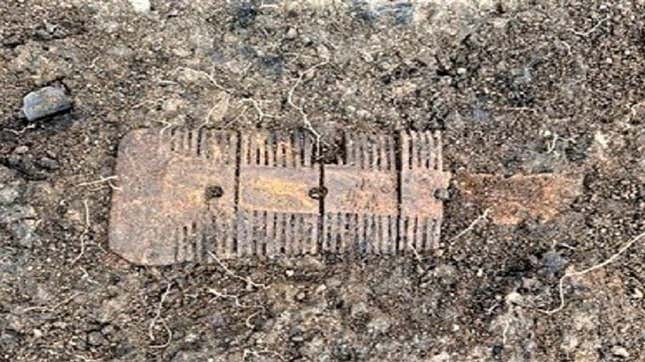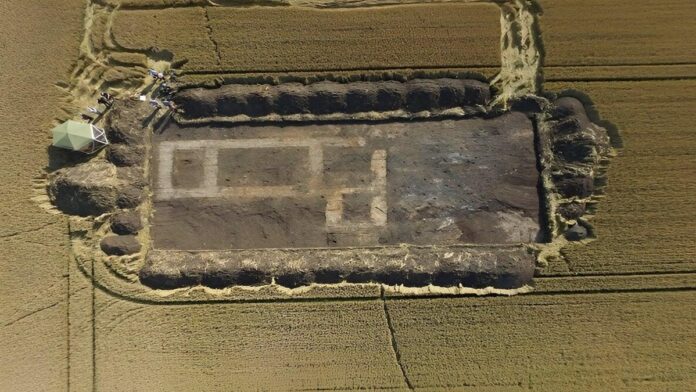Archaeologists digging through a field in Lincolnshire, England, may have found a 1,300-year-old hermitage on the site of a much more ancient henge.
The archaeological team found evidence for a monumental henge that dates to the Neolithic or Early Bronze Age; after the site was abandoned, its interior was reoccupied around the 7th century. By the 12th century, the abbots of Crowland build a large hall and chapel complex on the site, which still stand today. A henge is an oval or circular earthwork dating to the Neolithic or Early Bronze Age. According to English Heritage, a henge’s key feature is a bank structure that rings an interior ditch, making the central area the henge’s focal point.
The remains of Crowland’s medieval abbey are locally believed to have been the hermitage site of Guthlac, a nobleman-turned-religious hermit who died in 714. Local tradition also links the site to Guthlac’s sister, Pega, a posthumously venerated hermit in her own right, according to the team. Their research describing the henge structure and evidence of pre-12th century occupation of the site is published today in the Journal of Field Archaeology.
“We know that many prehistoric monuments were reused by the Anglo-Saxons, but to find a henge—especially one that was previously unknown—occupied in this way is really quite rare,” said Duncan Wright, an archaeologist at Newcastle University and lead author of the paper, in a university release.
Carbon dating of a rotted wooden post on the site revealed the earthen henge dated to between 1502 BCE and 1323 BCE. By the early Middle Bronze Age, the team found, most of the dug trenches that made up the henge were filled in. Until the 12th century—when the surrounding marshland was drained—the site was on a peninsula, and “would probably have been conceived of as the sacred core of the community,” the team wrote in the paper.
The site “offers an exceptional case study of an evolving sacred landscape in a deep-time perspective, culminating in its redevelopment by the Anglo-Norman monastery to claim legitimacy from illustrious saintly forebears,” they added.
That’s not entirely a surprise; sites that develop some kind of ceremonial importance often retain that importance even as they change shape. In 2021, a different team of researchers found that Stonehenge probably started as an entirely different henge.
The excavation of Anchor Church Field yielded pottery, two bone combs, and glass fragments from thin-walled drinking vessels, which the team stated were typical in the 7th to 9th centuries and are associated with high-status activity. Similar glass has been found at ecclesiastical sites like Glastonbury Abbey, the team said, but they may be from a funerary context in the recent case.

“It’s clear that even in later years Anchor Church Field continued to be seen as a special place worthy of veneration,” said Hugh Willmott, an archaeologist at the University of Sheffield, in the same release. “Guthlac and Pega were very important figures in the early Christian history of England, so it is hugely exciting that we’ve been able to determine the chronology of what is clearly a historically significant site.”
The team also found a 3-foot-wide (1-meter) stone-lined pit in front of the hall and chapel on the site, thought to be a well when it was found in the 19th century. But the team concluded the pit was too shallow to be a well, and that it was located above even the historic water table in the region. Thus, they concluded it may have been a setting for a flag or monumental cross in front of the religious site.
While the work doesn’t certifiably link the ancient site to Guthlac and Pega, its clear that Crowland was an area of sacred importance to residents of Lincolnshire for millennia, even before Christianity arrived in the region—indeed, long before Christianity began.
A version of this article originally appeared on Gizmodo.


